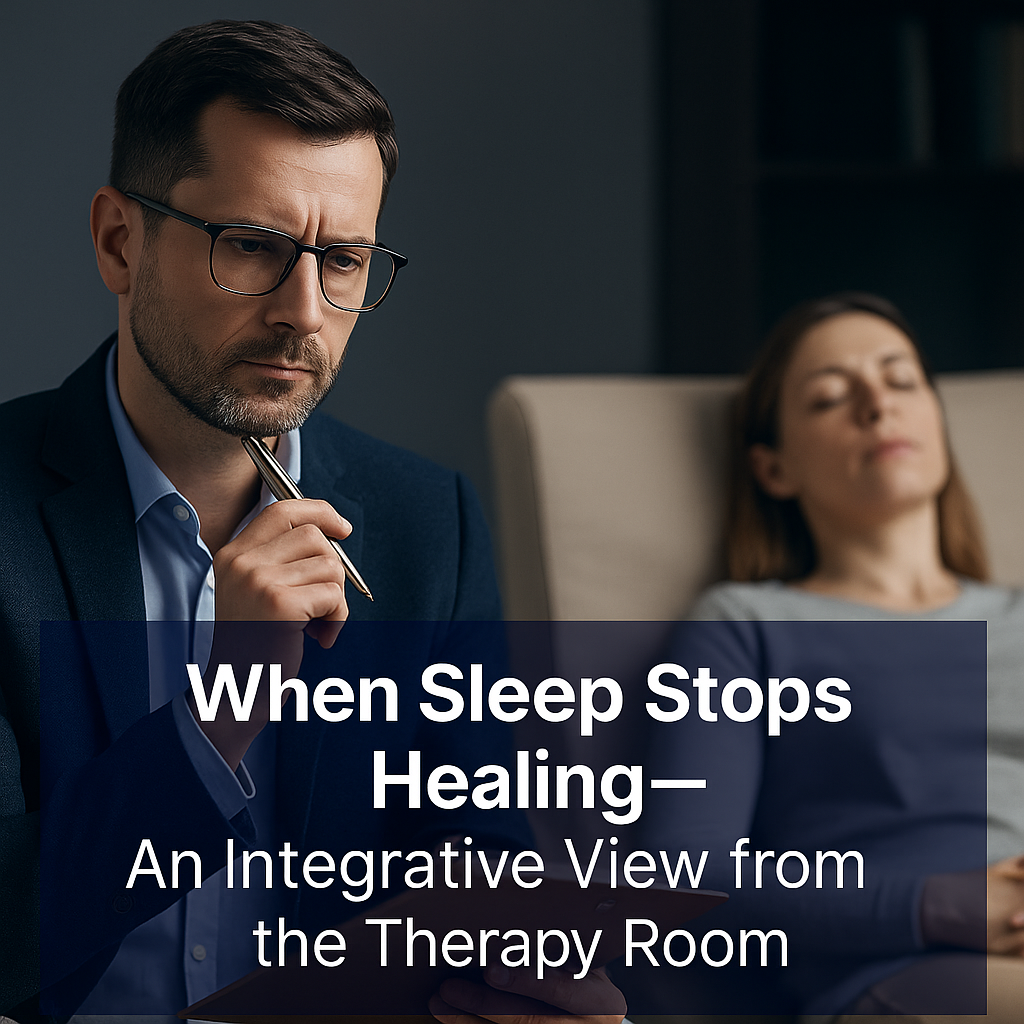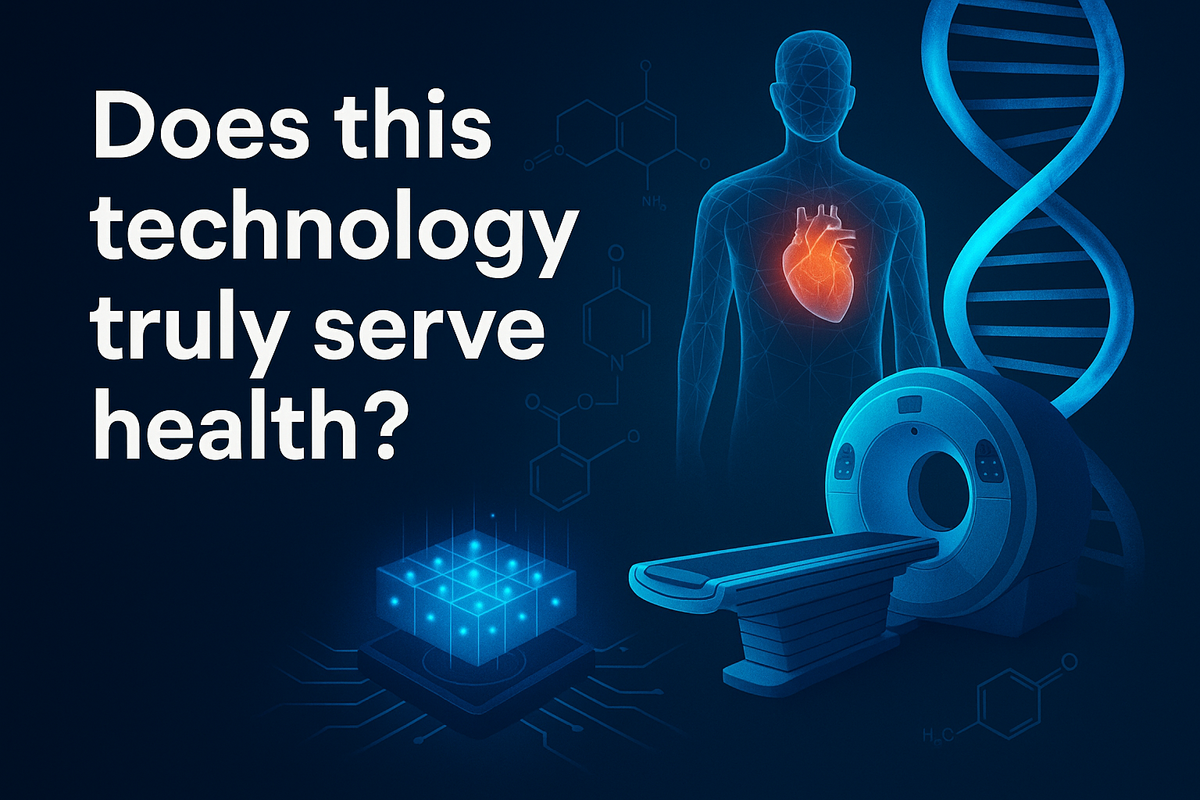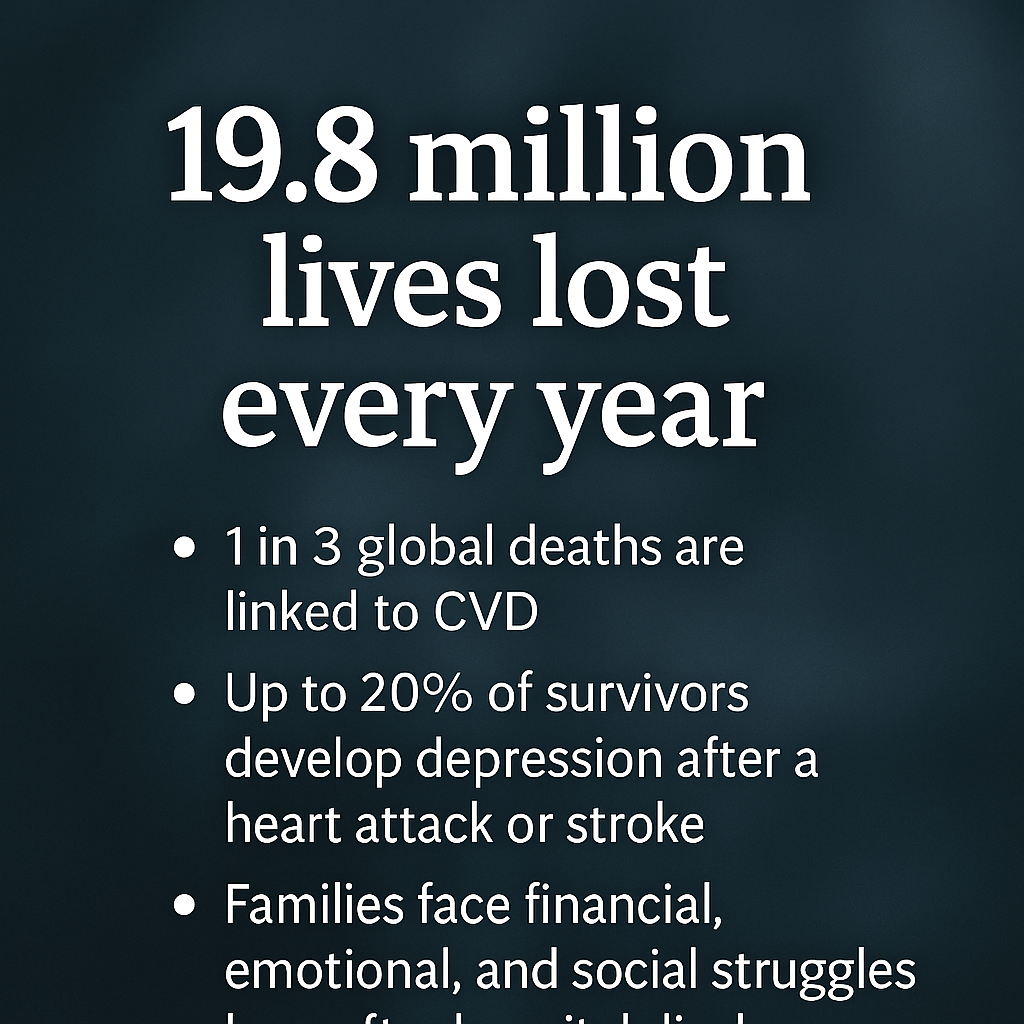1. The paradox we meet every week
Patients arrive saying, “I sleep, but I don’t feel rested.”
As practitioners, we recognize the familiar picture: they track their hours, follow advice, sometimes take medication — yet mornings still bring exhaustion.
In the therapy room, this paradox tells us something deeper: time asleep ≠ recovery.
Sleep is not a switch but a biological feedback loop that can lose coherence under stress, hormonal disruption, or energetic depletion.
2. What stops the body from repairing
From an integrative perspective, four mechanisms frequently emerge:
- Chronic sympathetic dominance — persistent alert signaling blocks parasympathetic repair.
- Hormonal rhythm disruption — especially estrogen and cortisol variability.
- Mitochondrial fatigue and microcirculatory stagnation — less oxygen, less ATP, poor tissue regeneration.
- Cognitive overflow — emotional and sensory hyper-processing long after lights-out.
When these interact, the body may “sleep” but remain metabolically awake.
3. Recognizing the clinical pattern
Therapists across disciplines observe similar cues:
- Shallow breathing, jaw tension, or bruxism during sessions.
- Afternoon energy crashes despite adequate nutrition.
- Dream-rich but non-refreshing nights.
- Elevated morning pulse or temperature fluctuations.
- Emotional reactivity after minor stressors.
Such observations remind us that non-restorative sleep is often a systemic regulation issue, not merely a psychological complaint.
4. The diagnostic dilemma
Standard sleep diagnostics focus on staging or apnea events. Useful — but insufficient when a client’s core issue is energetic imbalance or stress adaptation.
Integrative clinicians need ways to objectify function without pathologizing it.
Functional biofeedback, HRV analysis, and frequency-based assessments provide a non-medical window into regulation.
This is where functional mapping tools become invaluable: they allow the practitioner to see patterns rather than labels — coherence, overload, depletion, or disconnection between systems.
5. A functional lens on sleep
Viewed energetically, restorative sleep depends on synchronization between:
- Cortical down-regulation (letting go of mental processing)
- Endocrine-autonomic coherence (cortisol–melatonin rhythm)
- Mitochondrial readiness (energy available for cellular repair)
When any leg of this triad falters, repair halts.
The goal of therapy then shifts from sedation to restoration of communication within the organism.
6. The integrative response
Across fields — acupuncture, craniosacral therapy, light therapy, neurofeedback — clinicians experiment with ways to re-establish rhythmicity:
- Gentle parasympathetic activation before sleep (breathwork, CES, or cranial techniques)
- Low-level light or laser therapy to reopen microcirculation and ATP flow
- Hormonal rhythm tracking and support
- Emotional decompression through mindfulness or somatic dialogue
None of these act in isolation; they form a network of subtle signals reminding the body how to rest.
7. From observation to conversation
What remains most valuable is dialogue.
Practitioners consistently report that cases of “fatigue despite sleep” reveal multiple layers — emotional load, endocrine shifts, latent inflammation, or environmental stressors.
Sharing protocols, experiences, and even doubts keeps the profession grounded and innovative.
As one colleague recently said, “The hardest part isn’t finding what’s wrong — it’s finding what stopped healing.”
8. Inviting deeper assessment
When patterns become complex, integrative therapists turn toward functional and frequency-based analyses to clarify what drives the imbalance.
Technologies built on non-linear systems (NLS) principles provide a detailed map of coherence and stress distribution throughout the body.
They don’t diagnose disease but reveal how systems communicate — valuable data for refining treatment strategy.
Among current options, systems such as the
MiniQuantum and
NLSA
allow practitioners to explore autonomic balance, endocrine rhythm, and cellular vitality in a non-invasive way.
Used alongside observation and dialogue, they help identify the primary regulatory block behind chronic non-restorative sleep.
9. Ethical integration
Functional tools should expand, not replace, clinical reasoning.
Best practice means:
- Explaining to clients that assessments show functional patterns, not diagnoses.
- Correlating energetic findings with subjective reports.
- Maintaining transparency and referral pathways when pathology is suspected.
- Using data to guide intervention sequence — where to start, not how to label.
10. Collaborative reflection
If you work with fatigue, burnout, hormonal transitions, or chronic pain, you’ve likely seen how fragile recovery can become.
How do you interpret the difference between sleeping and healing?
What approaches have you found most reliable to restore deep repair?
We invite you to share observations, cases, or questions in the comments or on our professional page — this conversation enriches all of us.
11. Conclusion — From sleep to self-repair
When sleep stops healing, the question is no longer how to make someone sleep but how to help the organism remember how to repair.
Understanding the underlying patterns — neural, hormonal, and energetic — remains the foundation of integrative care.
And as assessment technologies evolve, practitioners gain new ways to visualize what they already sense in practice.
Among the available tools supporting this exploration, frequency-based NLS systems such as MiniQuantum and NLSA have shown meaningful value in mapping the root functional imbalance — helping practitioners restore the body’s capacity to heal through rest.
References (selected, verified)
- American Academy of Sleep Medicine. Clinical Guideline for Chronic Insomnia in Adults, 2021.
- Light therapy and photobiomodulation studies summarized by WALT, 2020.
- U.S. CDC Behavioral Risk Surveillance Data, 2022 – sex differences in insufficient sleep.
- Walker M. Why We Sleep — Science of Sleep and Recovery, Penguin Press 2017.
- Porges S. Polyvagal Theory, Norton 2011 — neuro-autonomic regulation framework.
- Coherence and system-resonance applications in integrative medicine, Frontiers in Human Neuroscience, 2020.
🩺 Join the conversation:
How do you identify the root of non-restorative sleep in your practice?
Share your insights or case reflections in the comments below or connect with peers on RD2S-Vital.com.
Among the modern functional tools supporting this exploration, NLS-based systems such as MiniQuantum and NLSA offer valuable perspectives for understanding the body’s repair capacity.





Comments